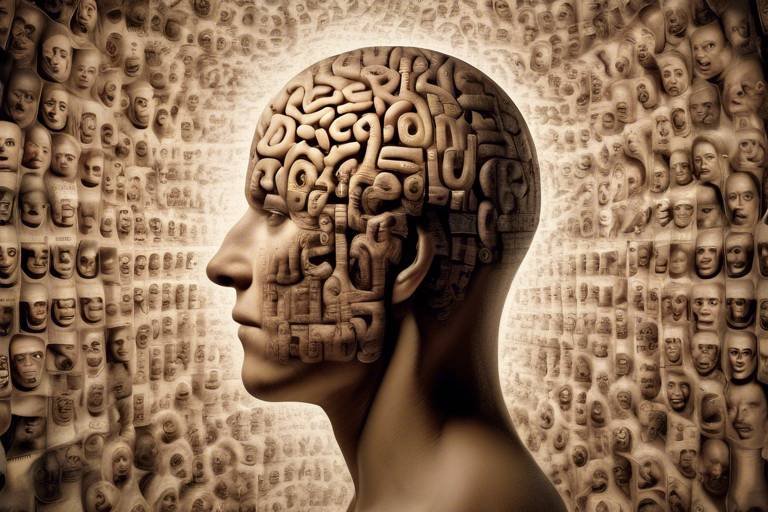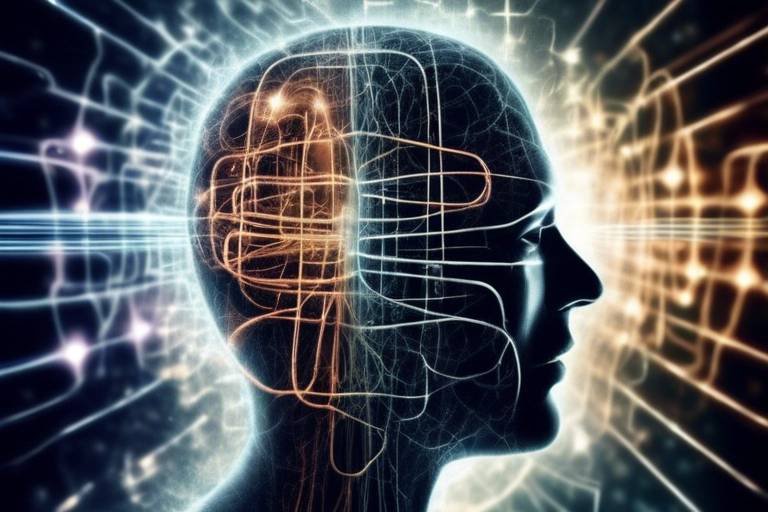Can we Really Understand Other Minds?
The quest to understand other minds is as old as humanity itself. From the moment we begin to communicate, we are faced with the challenge of interpreting the thoughts, feelings, and intentions of those around us. But can we truly grasp what someone else is thinking? This question dives deep into the realms of psychology, philosophy, and neuroscience, revealing the complexities of human consciousness and social interactions. Understanding other minds is not just about reading facial expressions or body language; it involves a profound exploration of empathy, emotional intelligence, and the very essence of consciousness itself.
At the heart of this inquiry lies the concept of mindreading. This term refers to our ability to infer the mental states of others, a skill that is vital for effective communication and social cohesion. However, the process is far from straightforward. Our perceptions are often clouded by personal biases, cultural differences, and emotional fatigue, which can distort our understanding of others. Imagine trying to listen to a friend share their struggles while your own worries drown out their voice; this is a common barrier that many face in their quest for empathy.
Moreover, the nuances of emotional intelligence play a significant role in how well we connect with others. Emotional intelligence encompasses the ability to recognize, understand, and manage our own emotions while also being aware of the emotions of others. It’s like having a finely tuned instrument that helps you navigate the complex symphony of human interaction. Those with high emotional intelligence can often pick up on subtle cues that others might miss, allowing for a deeper connection and understanding. But just how far can this understanding go?
As we delve deeper into the nature of consciousness, we begin to uncover various theories that attempt to explain how we perceive the minds of others. Some philosophers argue that we can never fully understand another person's mind, as each individual's thoughts and feelings are uniquely shaped by their experiences. Others suggest that through shared experiences and communication, we can bridge the gap and gain insight into each other's mental states. This ongoing debate highlights the intricate dance between individuality and shared humanity.
In summary, the question of whether we can truly understand other minds is layered with complexity. While we have the tools—such as empathy and emotional intelligence—to connect with others, our understanding is often limited by various barriers. As we continue to explore these themes, it becomes clear that the journey toward understanding other minds is not just about finding answers, but also about deepening our connections with those around us.
- What is mindreading? Mindreading, or theory of mind, is the ability to infer the thoughts and feelings of others based on their behavior and expressions.
- Can empathy be learned? Yes, empathy can be developed through practice and by enhancing emotional intelligence, allowing individuals to better understand and connect with others.
- What are the barriers to understanding other minds? Common barriers include personal biases, cultural differences, and emotional fatigue, which can hinder our ability to empathize and connect.
- How does emotional intelligence affect relationships? High emotional intelligence enables better communication, deeper connections, and a greater ability to navigate interpersonal conflicts.

The Nature of Consciousness
Understanding consciousness is fundamental to grasping how we perceive others' minds. It's like trying to navigate a maze blindfolded; without a clear sense of direction, we can easily lose our way. Consciousness encompasses our thoughts, emotions, and perceptions, all of which shape our interactions with others. Various theories have emerged to explain this intricate concept, and each offers a unique lens through which we can examine our ability to empathize with others.
One prominent theory is the Global Workspace Theory, which posits that consciousness arises from the integration of information across different brain regions. Imagine your brain as a theater stage, where only the most relevant information is spotlighted, allowing us to focus on what truly matters in a given moment. This spotlight effect is crucial for understanding others because it helps us prioritize emotional cues and social signals that indicate what someone else might be feeling or thinking.
Another fascinating perspective comes from the Integrated Information Theory (IIT), which suggests that consciousness is a fundamental property of the universe, much like space and time. According to IIT, the degree of consciousness corresponds to the amount of integrated information generated by a system. This theory invites us to ponder whether even simple organisms possess a form of consciousness, albeit a primitive one. The implications of this are staggering, as it opens up a dialogue about the consciousness of animals and even plants, challenging our traditional views on empathy and understanding.
Furthermore, the Higher-Order Thought (HOT) Theory posits that consciousness arises when we have thoughts about our thoughts. This layer of reflection allows us to become aware of our mental states and, in turn, enables us to infer the mental states of others. If you've ever had a moment of self-awareness that led you to understand why someone reacted a certain way, you've experienced HOT in action. This self-referential aspect of consciousness is essential for developing empathy and understanding the emotional landscapes of those around us.
To illustrate these theories, consider the following table that summarizes the key aspects of each theory:
| Theory | Key Concept | Implication for Understanding Others |
|---|---|---|
| Global Workspace Theory | Integration of information across brain regions | Helps prioritize emotional cues |
| Integrated Information Theory | Consciousness as a fundamental property | Challenges traditional views on empathy |
| Higher-Order Thought Theory | Thoughts about our thoughts | Facilitates self-awareness and understanding of others |
As we explore these theories, it becomes clear that our understanding of consciousness is not just an academic exercise; it has profound implications for our daily interactions. When we grasp the nature of consciousness, we unlock the potential to connect with others on a deeper level. This connection fosters empathy, enhances communication, and ultimately enriches our relationships. So, the next time you find yourself trying to understand someone else's perspective, remember that consciousness is a complex tapestry woven from thoughts, emotions, and perceptions, each thread contributing to the vibrant picture of human experience.
- What is consciousness? Consciousness refers to our awareness of thoughts, feelings, and surroundings, shaping how we interact with others.
- How does consciousness relate to empathy? Understanding consciousness helps us empathize with others by recognizing their emotional states and intentions.
- What are the main theories of consciousness? Key theories include Global Workspace Theory, Integrated Information Theory, and Higher-Order Thought Theory.

Empathy and Its Limits
Empathy is often heralded as the golden key to human connection, allowing us to resonate with the feelings and experiences of others. But can we truly grasp the depths of another person's emotions? While empathy enables us to forge deep bonds, it is not without its limitations. Understanding these boundaries is crucial for navigating our social landscapes effectively.
One of the primary constraints of empathy lies in our individual experiences. Each person’s life journey is unique, shaped by a myriad of factors such as culture, upbringing, and personal challenges. For instance, imagine two individuals who have both faced loss; one may find solace in community support, while the other may retreat into solitude. This divergence highlights how our backgrounds can influence our emotional responses and, consequently, our ability to empathize with one another.
Moreover, the context in which interactions occur plays a significant role. In high-stress situations, such as during a heated argument or a crisis, our capacity for empathy can diminish. We might become so consumed by our own emotions that we fail to recognize or validate the feelings of others. This phenomenon is often referred to as emotional flooding, where the sheer weight of our feelings can cloud our judgment and hinder our empathetic responses.
Additionally, cognitive biases can act as barriers to empathy. These biases can distort our perceptions and lead us to make snap judgments about others based on stereotypes or preconceived notions. For example, if we hold a bias against a particular group, we may struggle to empathize with individuals from that group, regardless of their unique circumstances. This highlights the importance of self-awareness and the need to challenge our biases to enhance our empathetic abilities.
Another significant factor is emotional fatigue. Constantly engaging in empathetic interactions can be draining. It’s akin to running a marathon—eventually, you hit a wall. Over time, this fatigue can lead to a phenomenon known as compassion fatigue, where individuals become desensitized to the suffering of others. This can create a cycle where our ability to empathize diminishes, leaving us feeling disconnected and isolated.
To better understand these limitations, let's summarize some of the key barriers to empathy:
- Individual Experiences: Unique backgrounds shape our emotional responses.
- Contextual Factors: Stressful situations can hinder our empathetic abilities.
- Cognitive Biases: Preconceived notions can distort our perceptions.
- Emotional Fatigue: Continuous empathetic engagement can lead to desensitization.
In conclusion, while empathy is a powerful tool for connection, it is essential to recognize its limits. By understanding these boundaries, we can work towards fostering deeper and more meaningful relationships. This understanding can also empower us to seek out new perspectives and challenge our biases, ultimately enriching our social interactions.

The Role of Emotions
Emotions are the vibrant colors that paint our interactions and the invisible threads that connect us to others. They are not just fleeting feelings; they are powerful forces that shape our understanding of the world and how we relate to those around us. Think about it—when you see someone smile, doesn’t it evoke a sense of joy within you? Conversely, witnessing someone in distress can stir feelings of sadness or concern. This is the essence of emotional intelligence, which plays a pivotal role in our ability to comprehend others' mental states.
Emotional intelligence, defined as the ability to recognize, understand, and manage our own emotions while also being attuned to the emotions of others, is crucial in fostering empathy. When we are emotionally intelligent, we can better navigate the complex landscape of human interactions. Here’s how emotional intelligence enhances our understanding:
- Recognition of Emotions: Being able to identify emotions in ourselves and others is the first step. This recognition allows us to respond appropriately, ensuring that our interactions are meaningful.
- Understanding Emotional Context: Emotions don’t exist in a vacuum; they are influenced by context. Understanding the background of someone's feelings can lead to deeper empathy.
- Regulation of Emotions: Managing our own emotions helps us maintain composure during challenging interactions, allowing us to be more present for others.
However, it’s essential to recognize that while emotions facilitate understanding, they can also cloud our judgment. For instance, if we are overwhelmed by our own feelings, it may become challenging to empathize with someone else's plight. This duality of emotions—both as a bridge and a barrier—highlights the complexity of human interactions.
Moreover, the interplay between emotions and communication cannot be overstated. Nonverbal cues such as facial expressions, tone of voice, and body language convey emotions that words alone often fail to express. For example, a simple nod or a warm smile can communicate agreement and support, while crossed arms and a furrowed brow might indicate defensiveness or disagreement. Being attuned to these cues allows us to better understand the emotional landscape of our conversations.
In conclusion, emotions are not just personal experiences; they are the foundation of our social interactions. They enable us to connect, empathize, and communicate effectively. By honing our emotional intelligence, we can improve our understanding of others, fostering deeper relationships and a more empathetic society.
- What is emotional intelligence? Emotional intelligence refers to the ability to recognize, understand, and manage our own emotions while also being aware of the emotions of others.
- How do emotions influence communication? Emotions significantly impact communication by affecting how we express ourselves and interpret the feelings of others through verbal and nonverbal cues.
- Can emotional intelligence be developed? Yes, emotional intelligence can be developed through self-awareness, practice, and learning to recognize and respond to emotions in oneself and others.

Cognitive Empathy vs. Affective Empathy
When we talk about empathy, it’s essential to distinguish between two significant types: cognitive empathy and affective empathy. These two forms of empathy, while related, serve different purposes in our social interactions and understanding of others. Cognitive empathy refers to our ability to understand another person's perspective or mental state. It’s like putting on someone else's glasses and seeing the world through their eyes. This type of empathy allows us to recognize what someone else is thinking or feeling without necessarily experiencing those emotions ourselves. It’s crucial in situations where we need to navigate complex social dynamics, such as in negotiations or conflict resolution.
On the flip side, affective empathy is all about feeling what others feel. It’s that gut reaction you have when you see someone in pain, and you feel a twinge in your own heart. Affective empathy enables us to connect emotionally with others, fostering deeper relationships and a sense of shared experience. This emotional resonance can lead to compassionate actions, as we are moved by the feelings of those around us.
To illustrate the differences further, consider this analogy: think of cognitive empathy as a map that helps you navigate someone else's emotional landscape, while affective empathy is the actual journey through that landscape. You might understand the paths and landmarks of another's feelings through cognitive empathy, but affective empathy allows you to walk alongside them, experiencing the highs and lows of their emotional terrain.
Both types of empathy are vital for effective communication and social interaction. However, they can also lead to different outcomes. For instance, someone with strong cognitive empathy might understand a friend’s distress but may not feel compelled to help. In contrast, someone with robust affective empathy may feel overwhelmed by another's pain, which can lead to emotional fatigue if not managed properly.
| Type of Empathy | Definition | Key Characteristics |
|---|---|---|
| Cognitive Empathy | The ability to understand another's perspective or mental state. |
|
| Affective Empathy | The ability to share and feel another's emotions. |
|
Understanding these differences can help us navigate our relationships more effectively. By recognizing when we need to employ cognitive empathy to understand a situation better or when to lean into affective empathy to connect emotionally, we can enhance our interactions and foster more meaningful connections. In essence, both forms of empathy complement each other, creating a richer tapestry of human experience and connection.
As we explore the complexities of human emotions and interactions, it becomes increasingly clear that mastering both cognitive and affective empathy is crucial for personal growth and social harmony.

Barriers to Empathy
Empathy is often hailed as the ultimate bridge between individuals, allowing us to connect on a deeper emotional level. However, this bridge can be riddled with cracks and barriers that prevent genuine understanding. One major barrier is cultural differences. People from different backgrounds may interpret emotions and intentions through varied lenses, leading to misunderstandings. For instance, a gesture that signifies friendliness in one culture might be perceived as intrusive in another. This divergence can create a significant gap in empathetic connection.
Another significant hurdle is personal biases. Our preconceived notions and stereotypes about others can cloud our judgment and hinder our ability to empathize. Imagine walking into a room filled with people who look or act differently than you. If you have biases, you might unconsciously dismiss their feelings or experiences, thinking, "They wouldn’t understand my struggles." This internal narrative can severely limit the depth of our empathetic responses.
Moreover, emotional fatigue plays a crucial role in our capacity to empathize. In a world where we are bombarded with negative news and personal challenges, it’s easy to become emotionally drained. When we’re exhausted, our ability to connect with others diminishes. We might find ourselves saying, “I just can’t deal with anyone else’s problems right now.” This withdrawal can lead to a vicious cycle where our lack of empathy further isolates us from others.
Additionally, the fast-paced nature of modern life often contributes to a lack of empathy. With our attention divided by technology and constant notifications, it’s challenging to be present with others. When was the last time you had a deep conversation without the distraction of your phone? This constant distraction can lead to superficial interactions, preventing us from truly understanding each other’s feelings.
To illustrate these barriers, let’s consider a simple table that summarizes common obstacles to empathy:
| Barrier | Description |
|---|---|
| Cultural Differences | Variations in emotional expression and interpretation across cultures. |
| Personal Biases | Preconceived notions that distort our perception of others' feelings. |
| Emotional Fatigue | Exhaustion that limits our capacity for empathy. |
| Distractions | Technology and fast-paced life preventing deep connections. |
In conclusion, while empathy is a powerful tool for connection, it is essential to recognize the barriers that can hinder our ability to understand others. By acknowledging these obstacles, we can work towards overcoming them, fostering a more empathetic world where genuine connections thrive.
- What are the main barriers to empathy? The main barriers include cultural differences, personal biases, emotional fatigue, and distractions from technology.
- How can I improve my empathy? You can improve your empathy by actively listening, being open to different perspectives, and reducing distractions during conversations.
- Why is empathy important in communication? Empathy enhances understanding and fosters deeper connections, making communication more effective and meaningful.

Philosophical Perspectives
The exploration of on understanding other minds is like peeling back the layers of an onion; each layer reveals deeper insights into the complexities of consciousness and interpersonal relationships. Philosophers have long debated the very nature of the mind and whether we can truly know what others are thinking or feeling. This inquiry leads us to ponder profound questions: Are we simply observers of others' behaviors, or do we have the capacity to genuinely understand their internal experiences?
One of the most notable philosophical stances comes from the concept of solipsism, which suggests that only one's own mind is sure to exist. This perspective raises the question of whether we can ever step outside our subjective experiences to grasp the thoughts of another. To put it simply, if we can only know our own thoughts, can we ever be certain of another person's mental state? This philosophical conundrum challenges the very foundation of empathy and understanding, making us reconsider our assumptions about social interactions.
Another significant philosophical viewpoint is the idea of theory of mind, which posits that we attribute mental states to others based on our observations and experiences. This process involves a complex interplay between our own cognitive frameworks and the behaviors we observe in others. For instance, when we see someone frowning, we might infer that they are unhappy, drawing on our own experiences of sadness. However, this inference is not always accurate. The philosopher David Hume argued that our understanding of others is inherently limited by our own biases and perceptions, suggesting that we often project our feelings onto others rather than accurately interpreting their emotions.
Moreover, the phenomenological approach, championed by philosophers like Edmund Husserl and Martin Heidegger, emphasizes the importance of lived experience. This perspective suggests that to understand another person's mind, we must engage with their unique experiences and contexts. It encourages us to listen actively and empathetically, fostering a deeper connection that transcends mere observation. By immersing ourselves in another's narrative, we can gain insights that might otherwise remain hidden behind the veil of our preconceptions.
In addition to these theories, the question of moral responsibility arises. If we can only partially understand others' minds, what does that mean for our interactions? Are we accountable for our actions when we misinterpret someone's feelings? Philosophers like Immanuel Kant argue that our ability to empathize is crucial for moral judgment, suggesting that understanding others is not just a cognitive exercise but a fundamental aspect of ethical behavior.
Ultimately, the philosophical inquiry into understanding other minds invites us to reflect on our own limitations and the complexities of human interaction. It encourages a humble approach to empathy, reminding us that while we may strive to connect with others, our understanding will always be shaped by our own experiences and biases. This realization can be both liberating and daunting, as it highlights the beauty of human diversity while acknowledging the challenges we face in truly knowing one another.
- What is solipsism? Solipsism is the philosophical idea that only one's own mind is sure to exist, raising questions about the existence of other minds.
- How does theory of mind work? Theory of mind involves attributing mental states to others based on observation and experience, allowing us to infer their thoughts and feelings.
- Why is empathy important? Empathy is crucial for moral judgment and ethical interactions, as it enables us to understand and connect with others on a deeper level.

Psychological Theories of Mindreading
Understanding how we perceive and interpret the thoughts and feelings of others is a fascinating journey into the realm of psychology. Mindreading, often referred to as the "theory of mind," is a critical skill that enables us to navigate our social world effectively. It allows us to predict how someone might react in a given situation, understand their motivations, and empathize with their experiences. But how do we develop this ability? Various psychological theories shed light on the intricate processes involved in mindreading.
One prominent theory is the Theory of Mind (ToM), which suggests that humans possess an innate ability to attribute mental states—like beliefs, desires, and intentions—to themselves and others. This capacity typically emerges in early childhood, around the age of 2 to 4 years, when children start to recognize that other people have different perspectives and thoughts. For instance, a child might understand that another child is hiding a toy because they want to keep it a secret, even if the first child knows where it is. This understanding is pivotal as it lays the groundwork for complex social interactions and relationships.
Another significant aspect of mindreading is the Simulation Theory, which posits that we understand others' minds by simulating their experiences in our own. Essentially, we put ourselves in someone else's shoes—emotionally and cognitively. This theory suggests that when we observe someone expressing joy or sadness, we internally replicate those feelings, allowing us to grasp their emotional state. It’s akin to watching a movie and feeling the character's joy or sorrow as if it were our own. This ability to simulate experiences helps us connect with others on a deeper level, fostering empathy and understanding.
To further illustrate these theories, let’s take a look at a simple comparison table:
| Theory | Description | Key Development Stage |
|---|---|---|
| Theory of Mind (ToM) | Ability to attribute mental states to oneself and others. | Emerges around ages 2-4 |
| Simulation Theory | Understanding others by simulating their experiences. | Develops through social interactions |
Moreover, the Intentionality Model emphasizes the role of intentions behind actions. This model suggests that we interpret others' behaviors based on our understanding of their goals and desires. For example, if someone approaches you with a smile and an open hand, you might infer they are friendly and want to engage in conversation. This model highlights how our interpretations are often influenced by the context of the interaction, as well as our past experiences and knowledge.
As we delve deeper into these theories, we realize that mindreading is not just a simple cognitive skill; it is a complex interplay of various mental processes. Factors such as cultural background, personal experiences, and even emotional intelligence play significant roles in shaping our ability to understand others. For instance, individuals from collectivist cultures may develop a heightened sensitivity to social cues, enhancing their mindreading abilities, while those from individualistic cultures might focus more on personal perspectives.
In conclusion, the psychological theories of mindreading provide valuable insights into how we comprehend and interact with the minds of others. Whether through the innate understanding of mental states, the simulation of experiences, or the interpretation of intentions, each theory contributes to our social cognition. As we continue to explore these concepts, we not only enhance our understanding of human behavior but also improve our ability to connect and communicate effectively with those around us.
- What is mindreading? Mindreading, or theory of mind, is the ability to attribute mental states to oneself and others, allowing us to understand and predict behaviors.
- How does mindreading develop in children? Children typically develop theory of mind between ages 2 to 4, as they begin to recognize that others have different thoughts and feelings.
- What are the main theories of mindreading? The main theories include Theory of Mind (ToM), Simulation Theory, and the Intentionality Model.
- How does culture influence mindreading? Cultural background can shape how we interpret social cues and empathize with others, affecting our mindreading abilities.

Development of Theory of Mind
The is a fascinating journey that begins in early childhood and evolves as we grow. This cognitive ability allows us to attribute mental states—like beliefs, desires, and intentions—to ourselves and others, essentially enabling us to "read" minds. But how does this process unfold? It’s like watching a young artist learn to paint; each stroke of understanding adds depth to their canvas of social interactions.
Typically, children start to show signs of developing a Theory of Mind around the age of 2 to 3 years. At this stage, they begin to recognize that others have thoughts and feelings different from their own. For instance, a toddler may understand that if they are hungry, their friend might feel the same way, but they might not yet grasp that their friend could want something entirely different, like a toy. This is the initial brushstroke on their canvas of social cognition.
As children approach the age of 4 to 5, they start to understand more complex mental states. They can recognize that someone might hold a false belief about a situation. For example, if a child sees a toy hidden under a blanket, they can understand that another child, who hasn’t seen where it was placed, might think the toy is still in its original spot. This revelation is akin to adding vibrant colors to their artwork, enriching their understanding of social dynamics.
By the age of 6 to 7, most children can engage in more sophisticated mindreading. They can comprehend emotions, intentions, and the motivations behind actions. This ability is crucial for navigating friendships and social hierarchies, as it allows them to predict how others might react in various situations. It’s like stepping back and observing the entire scene, rather than just focusing on one part of the painting.
As children continue to grow, their Theory of Mind develops further, influenced by various factors such as social interactions, cultural context, and even parenting styles. Children who engage in rich conversations about feelings and perspectives with their parents or caregivers tend to develop a more robust Theory of Mind. In contrast, those with limited social exposure might find this development stunted, much like an artist lacking the right tools to express their creativity.
Research has shown that children who have siblings often develop their Theory of Mind earlier than only children. The constant negotiation of feelings and intentions in sibling relationships provides a fertile ground for understanding the complexities of others' minds. It’s as if they have a live model to observe and learn from, refining their skills in real-time.
In summary, the development of Theory of Mind is a gradual and intricate process, shaped by a myriad of influences. Understanding this journey not only helps us appreciate the cognitive growth of children but also highlights the importance of nurturing these skills through supportive interactions. Just as an artist hones their craft over time, so too does our ability to understand the minds of others evolve, painting a richer picture of human connection.
- What is Theory of Mind? - Theory of Mind is the ability to attribute mental states to oneself and others, enabling the understanding of different thoughts, beliefs, and intentions.
- At what age do children develop Theory of Mind? - Children typically begin to show signs of Theory of Mind around the ages of 2 to 3 and continue to develop this ability through early childhood.
- How does having siblings affect Theory of Mind development? - Children with siblings often develop Theory of Mind earlier due to the social interactions and negotiations that occur in sibling relationships.
- Why is Theory of Mind important? - It is essential for effective communication, empathy, and navigating social relationships, as it allows individuals to understand and predict the behavior of others.

Neuroscience of Social Cognition
The field of neuroscience has made significant strides in unraveling the complexities of social cognition, which is essentially our brain's ability to understand and interpret the thoughts and feelings of others. Imagine your brain as a sophisticated social network, constantly processing a myriad of signals from those around you. This intricate process involves various neural mechanisms that work together to help us navigate our social world effectively. One of the key areas involved in social cognition is the medial prefrontal cortex, which is crucial for making judgments about others' mental states. This part of the brain acts like a conductor, orchestrating our responses and interactions based on the social cues we perceive.
Research has shown that when we observe someone experiencing an emotion, our brains often mirror that experience. This phenomenon is linked to the mirror neuron system, which plays a vital role in empathy. For instance, when we see someone smile, our brain activates similar neural pathways, which can evoke a sense of happiness within us. This mirroring effect is not just limited to positive emotions; it extends to negative feelings as well, allowing us to connect with others on a deeper level. However, the extent to which we can empathize varies significantly among individuals, influenced by factors like emotional intelligence and past experiences.
Additionally, advancements in neuroimaging techniques, such as fMRI (functional Magnetic Resonance Imaging), have provided invaluable insights into how our brains process social information. By observing brain activity in real-time, researchers have identified specific regions that activate during social interactions. The temporal-parietal junction, for instance, is particularly important for understanding others' perspectives, allowing us to engage in what is known as theory of mind. This ability to attribute mental states to others is crucial for effective communication and relationship-building.
Moreover, the interplay between our emotional and cognitive faculties is essential in social cognition. Neuroscientific studies indicate that emotional responses can either facilitate or hinder our capacity to understand others. For example, when we experience heightened stress or anxiety, our ability to empathize may diminish, leading to misunderstandings in social interactions. To illustrate this point, consider the following table that summarizes key brain regions involved in social cognition:
| Brain Region | Function |
|---|---|
| Medial Prefrontal Cortex | Judgment of others' mental states |
| Mirror Neuron System | Empathy and emotional mirroring |
| Temporal-Parietal Junction | Understanding perspectives and theory of mind |
| Amygdala | Processing emotions and social signals |
In summary, the neuroscience of social cognition reveals that our brains are wired for social interaction. They allow us to perceive and interpret the emotions of others, fostering connections that are essential for our survival and well-being. As we continue to explore this fascinating field, it becomes increasingly clear that understanding the neural underpinnings of social cognition can lead to more effective communication and deeper empathy in our daily lives.
- What is social cognition? Social cognition refers to the processes by which we interpret and understand the thoughts, feelings, and intentions of others.
- How does the brain process social information? The brain utilizes various regions, including the medial prefrontal cortex and the temporal-parietal junction, to process social cues and empathize with others.
- What role do mirror neurons play in empathy? Mirror neurons activate when we observe others' emotions, allowing us to experience similar feelings and enhancing our empathetic responses.
- Can social cognition be improved? Yes, through practice and awareness, individuals can enhance their emotional intelligence and empathy, leading to better social interactions.

Implications for Communication
Understanding the intricacies of how we perceive others' thoughts and emotions has profound implications for communication. When we grasp the concept of mindreading, we unlock the door to more effective interactions in both personal and professional settings. Imagine trying to navigate a maze blindfolded; without the ability to understand the intentions and feelings of those around us, our communication can become as tangled as the paths within that maze. However, by enhancing our capacity for empathy and emotional intelligence, we can clear the way for smoother exchanges.
One of the most significant aspects of effective communication is the ability to accurately interpret non-verbal cues. Body language, facial expressions, and tone of voice often convey more than spoken words. For instance, a simple smile can communicate warmth and openness, while crossed arms may signal defensiveness. By honing our skills in reading these cues, we can respond more appropriately and foster a deeper connection with others. Research suggests that approximately 93% of communication is non-verbal, emphasizing the need to develop an acute awareness of these subtle signals.
Moreover, understanding the limits of our empathy can also enhance our communication strategies. Recognizing that we may not fully grasp another person's emotional state allows us to ask questions and seek clarification, rather than making assumptions. This approach not only prevents misunderstandings but also demonstrates respect for the other person's feelings. For example, instead of saying, "I know how you feel," a more effective response could be, "Can you help me understand what you're experiencing?" This simple shift in language fosters a more open dialogue and encourages the sharing of emotions.
In professional settings, the implications of understanding other minds are equally significant. Leaders who cultivate emotional intelligence are better equipped to motivate their teams and manage conflicts. By being attuned to the emotional climate of their workplace, they can address issues before they escalate. Consider the following benefits of enhanced communication through mindreading:
- Improved Team Collaboration: Team members who understand each other's perspectives can work together more effectively.
- Conflict Resolution: Recognizing the emotions behind disagreements allows for more constructive discussions.
- Increased Trust: Transparent communication fosters an environment of trust and openness.
Furthermore, in our increasingly globalized world, cultural differences can significantly impact communication. Understanding that different cultures may interpret emotions and intentions differently is crucial. For instance, while direct eye contact is often seen as a sign of confidence in Western cultures, it may be perceived as disrespectful in some Asian cultures. By being aware of these nuances, we can tailor our communication strategies to be more effective across diverse contexts.
In conclusion, the implications of understanding other minds extend far beyond mere conversation. They shape our relationships, enhance our professional interactions, and ultimately contribute to a more empathetic society. By actively engaging in mindreading, we not only improve our communication skills but also enrich our connections with others, paving the way for a more harmonious existence. So, the next time you engage in a conversation, remember that there is a whole world of thoughts and feelings behind those words. Are you ready to explore it?
- What is mindreading? Mindreading, or theory of mind, refers to our ability to attribute mental states—like beliefs, desires, and intentions—to ourselves and others.
- Why is empathy important in communication? Empathy allows us to connect emotionally with others, enhancing our ability to communicate effectively and understand different perspectives.
- How can I improve my emotional intelligence? You can improve emotional intelligence by practicing active listening, seeking feedback, and being open to understanding others' emotions.
Frequently Asked Questions
- What is the nature of consciousness?
Consciousness refers to our awareness of thoughts, feelings, and surroundings. It's a complex phenomenon that involves various theories, including physicalism, dualism, and panpsychism, which attempt to explain how consciousness arises and how it influences our ability to understand others.
- How does empathy work?
Empathy is the ability to recognize and share the feelings of others. It allows us to connect emotionally, but it's not without limits. Factors like personal experiences, emotional fatigue, and cultural differences can impact our empathetic responses, making it sometimes challenging to truly understand what someone else is feeling.
- What are cognitive empathy and affective empathy?
Cognitive empathy involves understanding another person's perspective and thoughts, while affective empathy is about feeling what another person feels. Both types play crucial roles in social interactions, helping us navigate relationships and respond appropriately to others' emotional states.
- What barriers can hinder empathy?
Barriers to empathy can include cultural misunderstandings, personal biases, and even emotional exhaustion. These obstacles can make it difficult to connect with others on a deeper level, highlighting the importance of self-awareness and openness in fostering empathy.
- How do children develop a theory of mind?
The development of theory of mind in children occurs in stages, starting around age 2 and continuing into adolescence. Kids learn to recognize that others have thoughts and feelings distinct from their own, which is essential for social interaction and understanding.
- What does neuroscience say about social cognition?
Neuroscience has revealed fascinating insights into how our brains process social information. Studies show that specific areas of the brain are activated when we engage in empathetic thinking or attempt to understand others' mental states, underscoring the biological basis of social cognition.
- Why is understanding others' minds important for communication?
Understanding others' minds is key to effective communication. It allows us to tailor our messages based on how we perceive others' thoughts and feelings, leading to better relationships and reducing misunderstandings in various contexts, from personal interactions to professional environments.



















